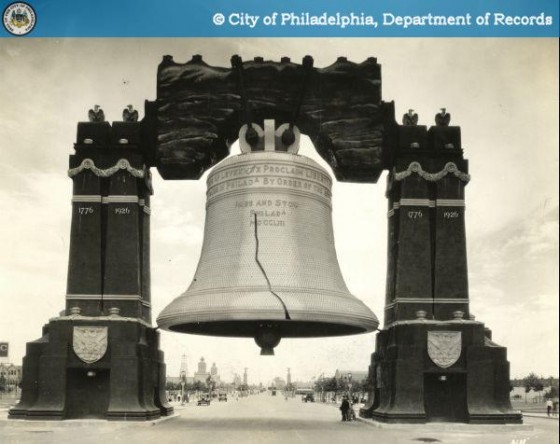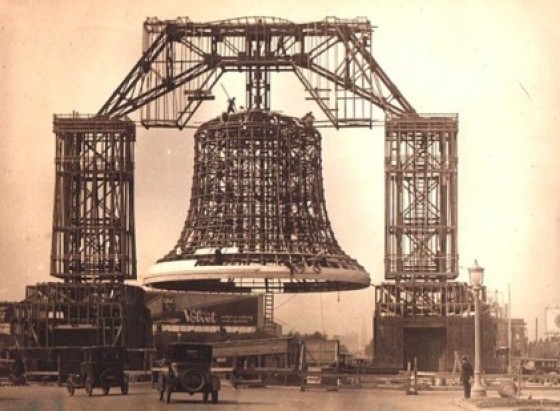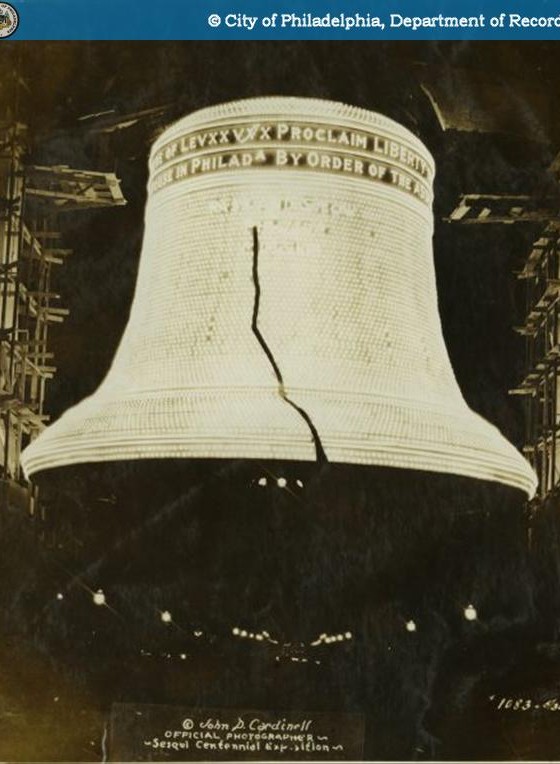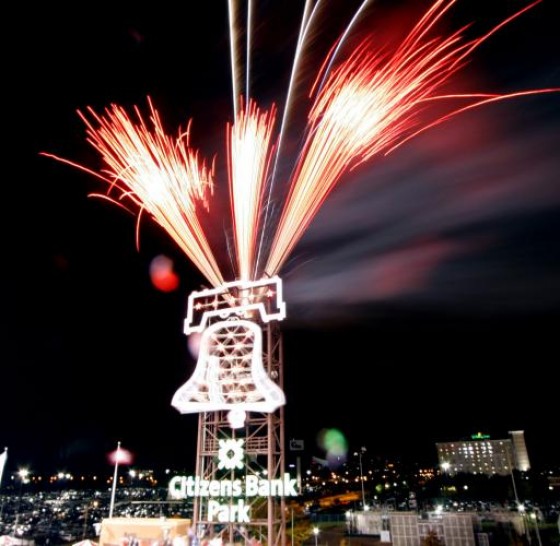The Sesquicentennial International Exposition (insert Waiting for Guffman reference here) was sort of the sequel to the highly lauded Centennial Exhibition of 1876. Compared to the original, this world’s fair was rather pathetic. The turnout was poor, the weather was worse, and by the end, it was considered a complete and utter failure.
One of the main attractions at the Sesquicentennial was an 80-foot tall replica of the liberty bell that would greet visitors at Broad and Bigler Sts., right in the center of what is now Marconi Plaza. While it may sound like something simple to build, it proved to be a massive undertaking. Ninety-seven tons of steel and thirty-five thousand feet of lumber were needed to bring this monster to life. The contractor that took on the physical challenge was Frank C. English and Sons.
The bell itself consisted of forty-two tons of steel and sheet metal suspended more than twenty feet above Broad St. The towers holding it up were mounted on pilings that were sunk 30 feet into the ground. They were made up of steel frames covered in sheet metal and bronze-colored plaster. Construction took two months and cost $100K ($1.28M in today’s dollars).
By the time the fair opened on Memorial Day Weekend in 1926, scaffolding was still on the towers. That didn’t matter at night, however, because the bell was outfitted with 26,000 15-watt bulbs. Eight spotlights lit the clapper. A ladder that encircled the structure was used for bulb maintenance, which was constantly necessary.
Though it was never built to be a permanent structure, the bell only stood for a mere fourteen months. After the exhibition failed, all of its assets were auctioned off. The Bell was sold for scrap for $60, and by the end of August 1927, was gone. This, of course, doesn’t mean that Philadelphia doesn’t still have a giant lit-up Liberty Bell. The one at Citizen’s Bank Park stands only a few hundred feet from the location of the original.
— GroJLart, philaphilia.blogspot.com




